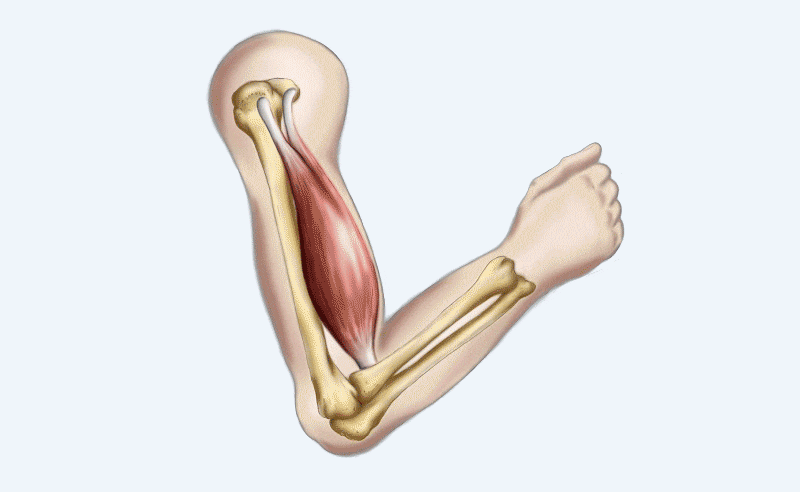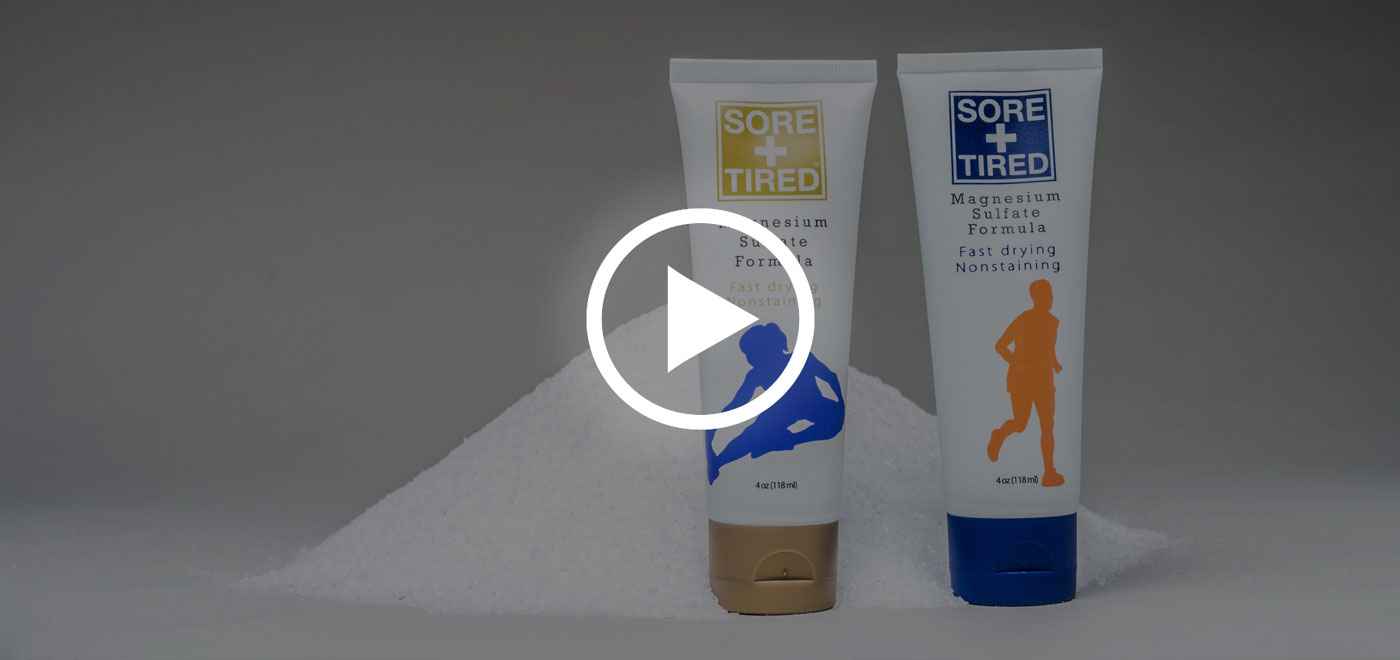Why magnesium?
Every Sore+Tired® formulation starts with magnesium sulfate. Better known as Epsom salt, it is the most widely used mineral treatment for postworkout relief and recovery in the US, as well as a staple in training rooms across amateur and professional sports. When dissolved in water and used as a soaking solution or compress (ie, applied with a wet towel), it is recommended for relieving and relaxing sore, tired muscles while reducing stiffness, pain, and swelling.
Helping your body recover and perform at its best
Magnesium plays a critical role in over 300 different processes, from cellular repair to DNA maintenance. Low magnesium levels are associated with spasms, cramps, and fatigue.
While magnesium is abundant in different plant- and animal-based foods, studies show that many Americans do not consume enough. Even under the best of circumstances, less than 50% of the magnesium you consume makes it into your system. There are also many common foods, beverages, and drugs that block magnesium absorption and retention. These include popular brands of soda, iced teas, coffee, and alcohol, as well as several widely used drugs for heart disease and indigestion.

Muscles don’t work without magnesium
Every jump, lift, or throw is the product of the ebb and flow of magnesium and calcium in and out of your muscle fibers. Calcium causes muscles to contract. Magnesium allows them to relax. Low magnesium levels can lead to muscle tightness and cramping, triggering the release of cortisol and other proinflammatory compounds.
Magnesium is critical for turning food into energy
It doesn’t matter if you feast on fruit, energy bars, or ice cream sundaes—with a few minor exceptions, your muscles, neurons, and all of the other cells in your body burn only one type of fuel, a super molecule called ATP (adenosine triphosphate).
Your metabolic system creates ATP from the food you eat and then distributes it throughout your body, from the tips of your toes to the top of your head. Your cells turn ATP into energy by snapping off one phosphate group in a process called “hydrolysis,” but they can’t do this if no magnesium is available.
Magnesium binds to ATP and causes it to change shape so that hydrolysis can take place and energy can be released into the cell. Without magnesium, ATP is just a sprawling string of atoms with no nutritive value. So if energy is your issue and you’re eating right, magnesium may be the spark you’re missing to light your fire.



